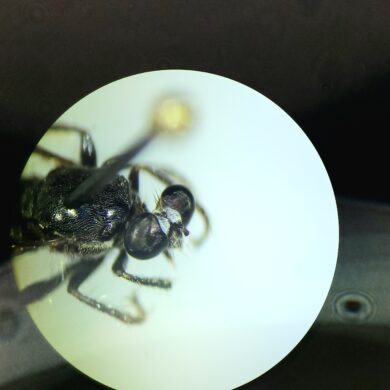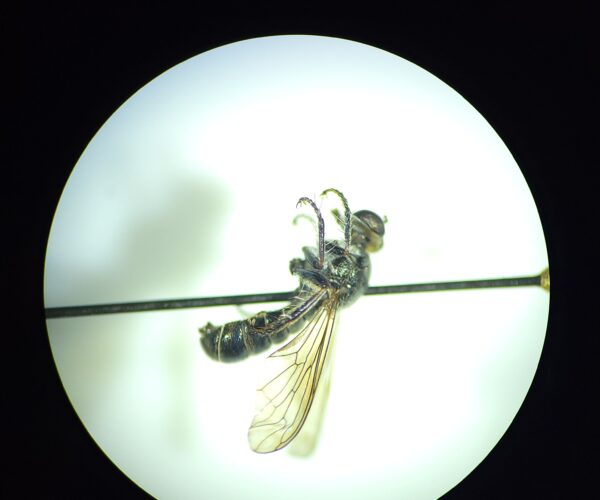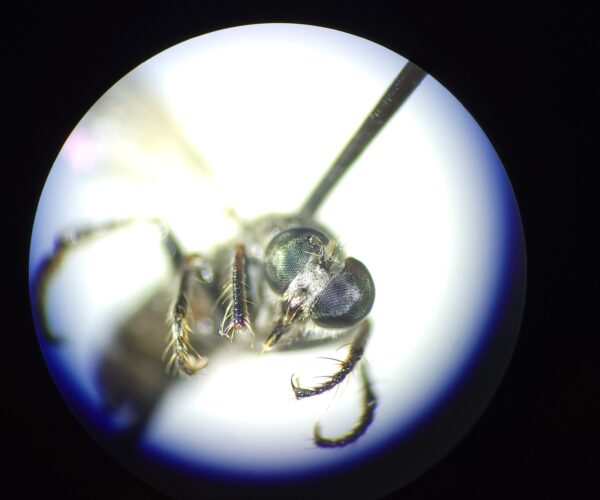A New Robber Fly Species for Martha’s Vineyard
Atomosia puella Added to the Vineyard Checklist
In late July 2021, as part of an ongoing study of insects at Thimble Farm, I deployed several transects of “bee bowls” to collect bees. These traps are very simple, nothing more than brightly colored bowls filled with weak soap solution and set up in potential bee habitat. Bees, mistaking the colored bowls for flowers, land in the soap solution, sink, and drown. After a day or two, you collect the bowls, wash and dry the contents, and then review your sample of bees that have been active in area (or at least bees that are general enough in their preferences so they can be fooled by a colored bowl). It sounds like a harsh method, but it’s a standard research technique and is one of the best ways to conduct general surveys for bees. And sometimes, the by-catch is more interesting than the bees!
I pinned and preserved the results from those surveys and, since then, periodically review what I caught; as my bee ID skills have evolved, I’ve gradually been able to put precise names to more and more of those specimens. Recently, a specimen (which I must have looked at several times before!) struck me as very odd-looking for a bee. Under a dissecting microscope, it quickly proved to be a tiny robber fly, only about 7 mm long. Its small size, some specifics of the pattern of veins in its wings, and its general lack of extreme hairiness (for a robber fly) rapidly produced a genus-level identification of Atomosia by comparison to photographs on the Bugguide.net website. I took some cell phone photos through the microscope, used them to create an observation in iNaturalist, and tagged a robber fly expert who often helps me out. Within an hour or so, I had a species-level ID: Atomosia puella, one of the smallest members of this family of predatory flies.
Very little seems to be known about the biology of A. puella. Like other robber flies, it presumably captures most of its prey in flight. Given its size, those prey items must also be small, perhaps insects like leafhoppers and small flies. While this species doesn’t seem to have a generally accepted common name, one robber fly website calls members of the genus Atomosia “micropanthers,” which seems appropriate!
The range of this tiny predator is vast, comprising the eastern portions of the United States and southern Canada as well as parts of Mexico. Its distribution within that range, however, is likely not uniform, and in our region specifically, this species appears to be rare on the Massachusetts coastal plain, Cape Cod, and the Islands. As far as we can determine, this accidental discovery is a first record for the tri-county Cape and Islands region. The identification of this species almost two and half years after it was collected is a good illustration of the value of arthropod specimens: well cared for, they endure for years, and they are always available for re-examination.
You can learn more about robber flies and related families on our page devoted to the superfamily Asiloidea.
Matt Pelikan is the director of the Martha’s Vineyard Atlas of Life project at BiodiversityWorks. Robber flies (the family Asilidae) are one of his favorite groups of insects for study.


